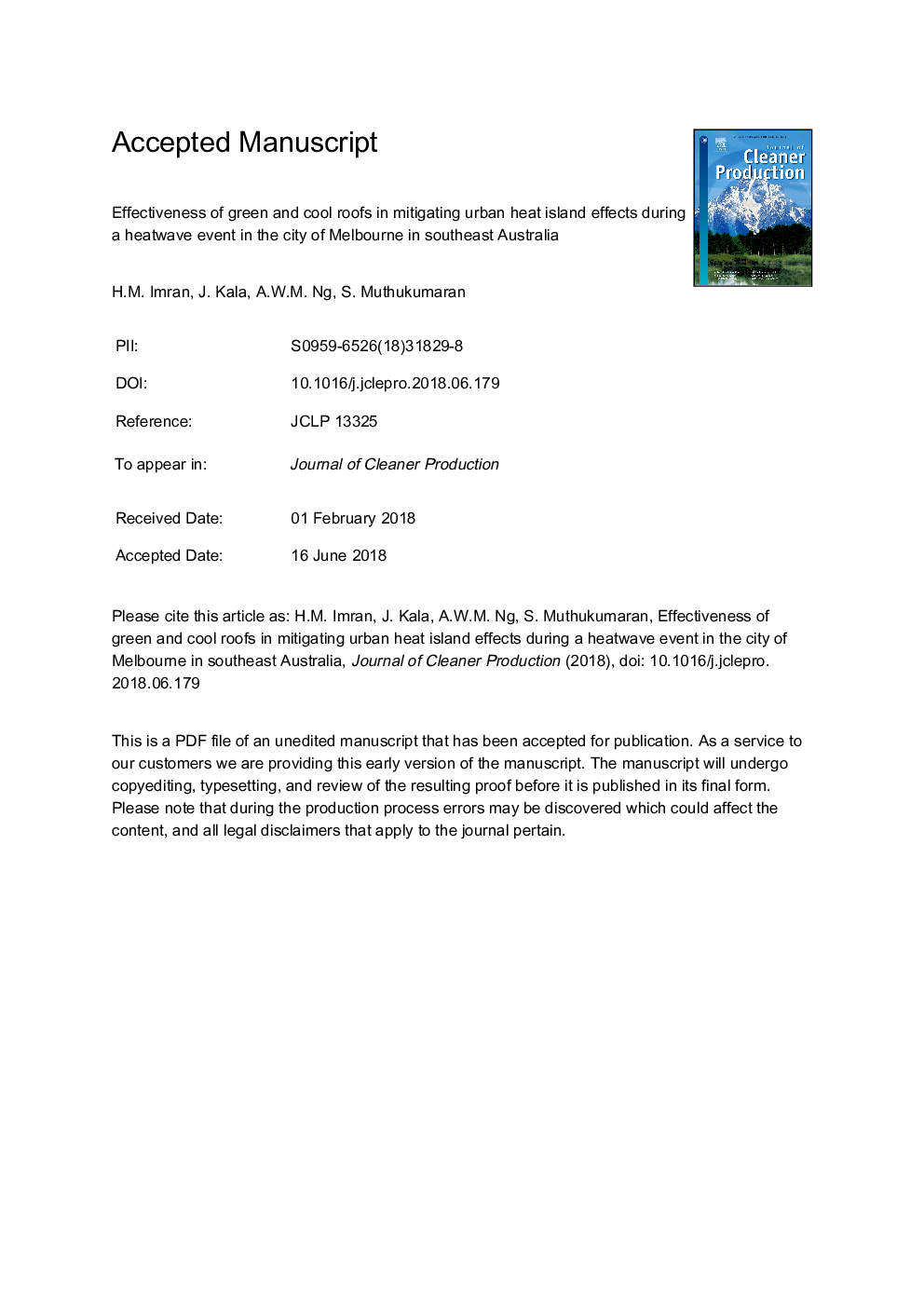| کد مقاله | کد نشریه | سال انتشار | مقاله انگلیسی | نسخه تمام متن |
|---|---|---|---|---|
| 8093871 | 1522056 | 2018 | 35 صفحه PDF | دانلود رایگان |
عنوان انگلیسی مقاله ISI
Effectiveness of green and cool roofs in mitigating urban heat island effects during a heatwave event in the city of Melbourne in southeast Australia
ترجمه فارسی عنوان
اثربخشی سقف های سبز و خنک در کاهش اثرات جزایر گرمسیری شهر در طول یک رویداد گرما در شهر ملبورن در جنوب شرقی استرالیا
دانلود مقاله + سفارش ترجمه
دانلود مقاله ISI انگلیسی
رایگان برای ایرانیان
کلمات کلیدی
موضوعات مرتبط
مهندسی و علوم پایه
مهندسی انرژی
انرژی های تجدید پذیر، توسعه پایدار و محیط زیست
چکیده انگلیسی
This study evaluates the effectiveness of green and cool roofs as potential Urban Heat Island (UHI) mitigation strategies, and the impacts of these strategies on human thermal comfort during one of the most extreme heatwave events (27th - 30th January 2009) in the city of Melbourne in southeast Australia. The Weather Research and Forecasting model coupled with the Single Layer Urban Canopy Model including different physical parameterization for various types of roofs (conventional, green and cool roofs) is used to investigate the impacts of green and cool roofs. Results show that the maximum roof surface UHI is reduced during the day by 1â¯Â°C-3.8â¯Â°C by increasing green roof fractions from 30% to 90%, and by 2.2â¯Â°C-5.2â¯Â°C by increasing the albedo of cool roofs from 0.50 to 0.85. Cool roofs are more efficient than the green roofs in reducing the UHI with maximum differences of up to 1.4â¯Â°C. The reductions of the UHI vary linearly with the increasing green roof fractions, but slightly non-linearly with the increasing albedo of cool roofs. The maximum reductions in wind speed are 1.25â¯mâ¯sâ1 and 1.75â¯mâ¯sâ1 with 90% green and cool roofs (albedo 0.85) respectively. While previous studies report that the advection of moist air from rural areas is a key mechanism, this study shows that this is not the case for the extreme heatwave event due to the very dry and warm conditions, and instead, convective rolls play a more important role. This study also shows that initial soil moisture for green roofs does not have a substantial impact on the UHI. Finally, green roofs improve human thermal comfort by reducing the Universal Thermal Comfort Index by up to 1.5â¯Â°C and 5.7â¯Â°C for pedestrian and roof surface levels respectively, and by 2.4â¯Â°C and 8â¯Â°C for cool roofs for the same levels.
ناشر
Database: Elsevier - ScienceDirect (ساینس دایرکت)
Journal: Journal of Cleaner Production - Volume 197, Part 1, 1 October 2018, Pages 393-405
Journal: Journal of Cleaner Production - Volume 197, Part 1, 1 October 2018, Pages 393-405
نویسندگان
H.M. Imran, J. Kala, A.W.M. Ng, S. Muthukumaran,
